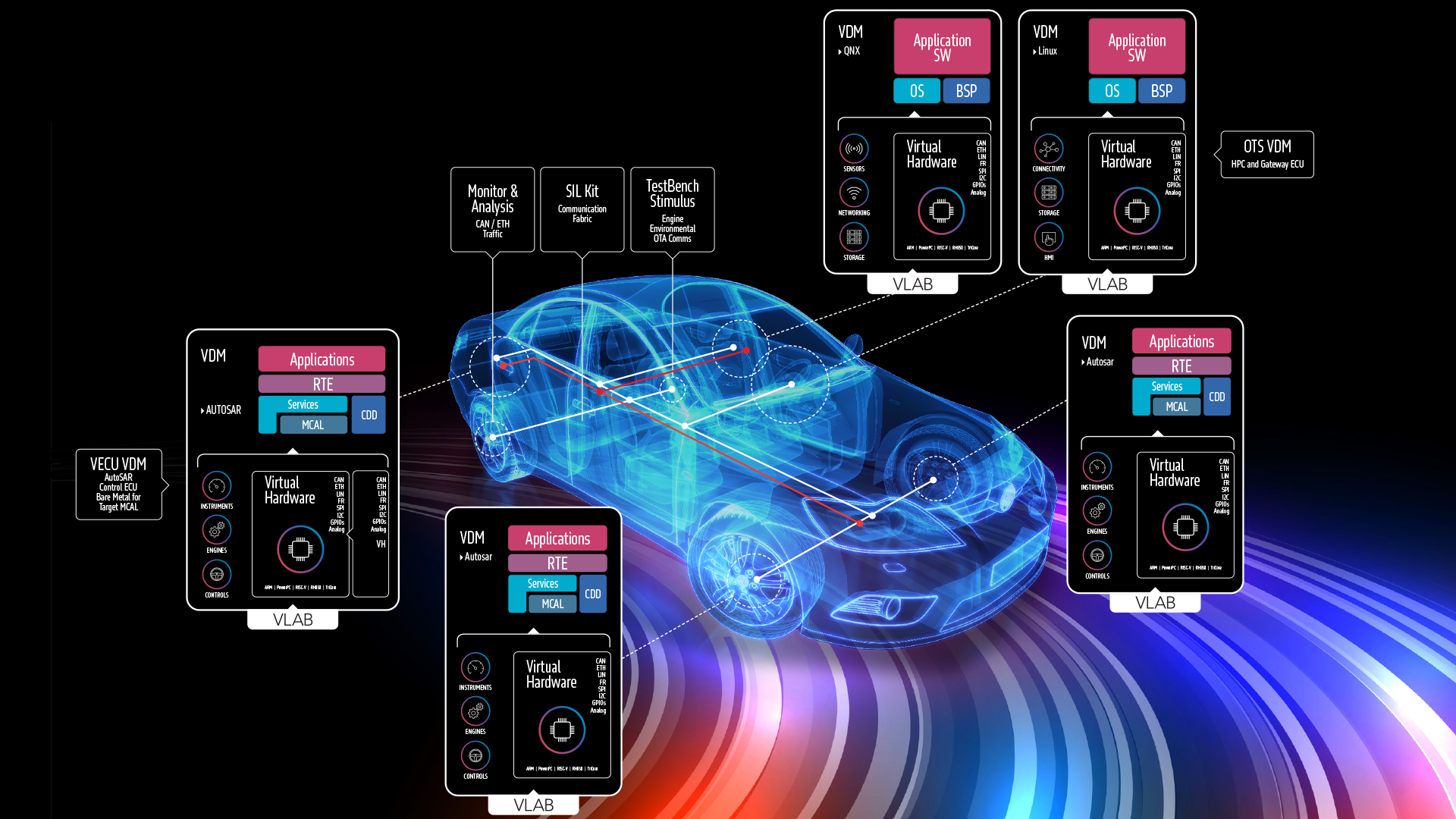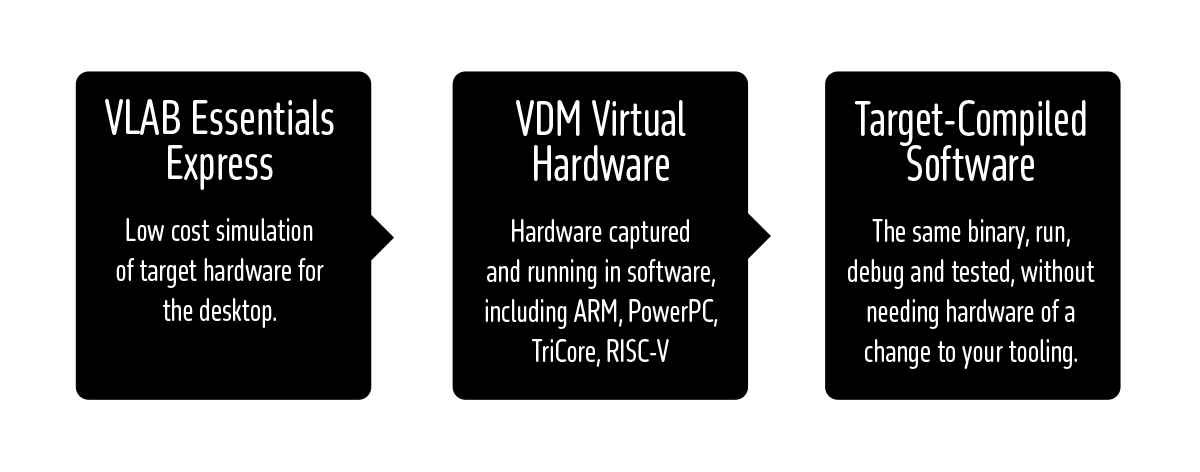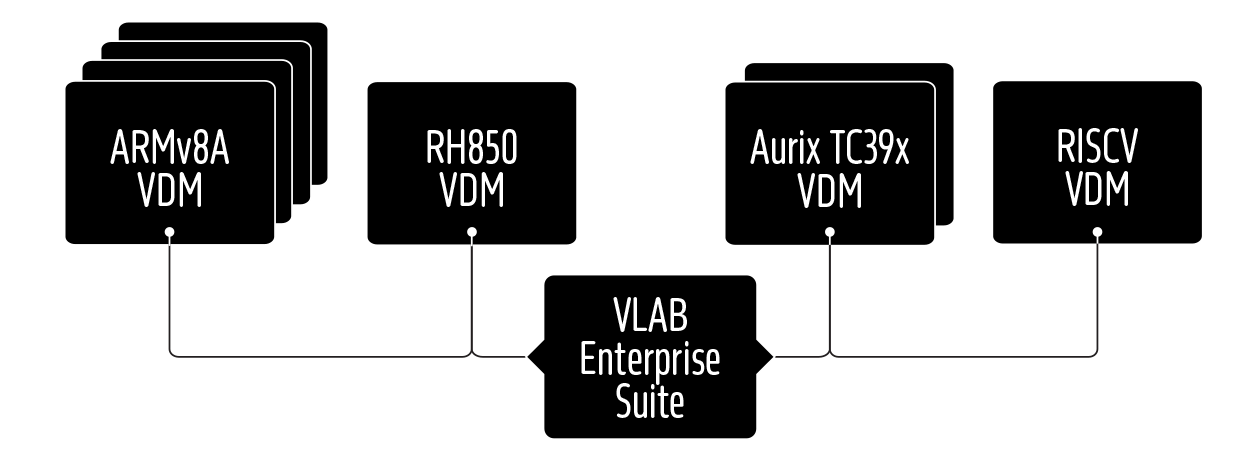How do customers use VLAB VDMs? It depends on what is important to them, be it performance, accuracy, or ability to integrate with existing tooling and processes. What we know is that VLAB VDMs provide the flexibility to enable a broad range of uses-cases and users across several environments.
Working with software for embedded systems, from applications through to low-level, has always presented challenges; however, VLAB VDMs are offering a new experience.
The Automotive Industry continues to be rapidly transformed; electrification of drivetrains, software-defined vehicles, over-the-air updates… the list is growing. Each of these advances are examples of the heavy demands being placed on developing, testing and maintaining various Automotive ECUs. The industry has largely turned to virtualization to meet these needs and broadly adopted its own standard or classification of Virtual ECUs (VECUs).
VLAB is enabling a new path for the development of ECUs. Within the same environment, VLAB VDMs can be configured and deployed, purpose-built for each development phase, and the scenario or software under test. VLAB is the only virtualization technology that enables execution of target-compiled binaries with Level 2, 3 and 4 VECUs as defined by the standard automotive definition.
VLAB VDMs, are used across the verification spectrum; for unit-level tests of BSPs, through to multiple VDMs, connected over Vector SilKit or other simulation fabrics and integrated into whole car simulation tests.
Key to the automotive industry, VLAB VDMs are providing the means to address the code coverage and validation of safety-critical functions, through fault injection and simulation of failure conditions, which is not possible/feasible with real hardware.

For many target devices, EVBs or development boards have been the only available option to develop and test the target embedded software.
VLAB VDMs are easy to access, install and configure and can be used with the same tools and environment as an EVB, making them a compelling alternative. Customers are choosing VLAB VDMs because they are easy and reliable to use, and provide features and capabilities not found in hardware equivalents.

CI/CD/CT of embedded software needs scalable, on-demand execution capacity for large-scale test regressions, seamlessly working alongside local debug and test environments. Environments such as these rely on the availability of local test hardware or device labs. VLAB VDMs remove that restriction, and users can deploy instances on desktops, servers or in the cloud, where and when they are required.

VLAB Enterprise has been designed for companies that are managing portfolios of multiple embedded devices and looking for a scalable CI/CD/CT solution, as it equips individuals and teams with flexible licensing and access to ready-to-run VLAB VDMs that target key CPU Processor Architectures.